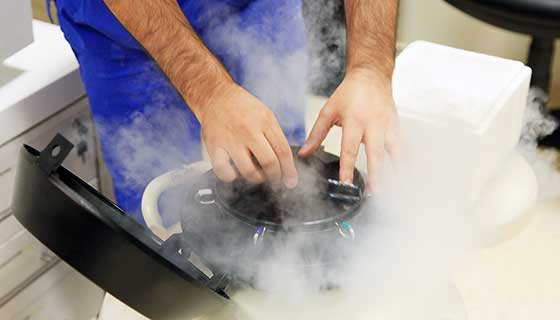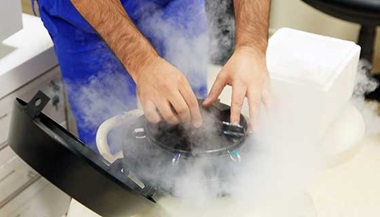Calculating Your Monthly Fertility Window
Your fertility window is the time during your menstrual cycle when you’re most likely to get pregnant. For most people, it’s the five days leading up to ovulation, the day of ovulation and the day after ovulation. Calculating your monthly fertility window can help you target the optimal time to have sex if you’re trying to conceive. However, natural family planning is a less reliable form of contraception and does not protect against sexually transmitted infections.
Understanding Your Menstrual Cycle
If you’re trying to get pregnant and want to track ovulation, you need to understand your menstrual cycle. Your menstrual cycle is your body’s way of preparing for pregnancy. It begins on the first day of your period and starts over when your next period begins. A typical menstrual cycle is 28 days, but cycles ranging from 21 to 35 days are considered normal.
Lots of changes happen in your body during the cycle, including hormone fluctuations. About halfway through, one of your ovaries releases a mature egg. The egg goes to one of your fallopian tubes, where it waits to be fertilized by sperm. The lining of your uterus gets thicker, too. This prepares the uterus for implantation of the fertilized egg.
If you don’t get pregnant, it could mean that the egg didn’t fertilize, or that the embryo (fertilized egg) didn’t implant into the uterus. In those cases, the uterine lining sheds and you get your period.
When am I ovulating?
Knowing when you’re ovulating is key to tracking your fertility window and determining the best time to get pregnant. There are a few different fertility awareness methods, also called rhythm methods. It’s best to use all three methods if you’re doing natural family planning.
Calendar method
Use the calendar method to track the length of your menstrual cycle. Each month, mark the first day of your period on a calendar or in a period-tracking app. The number of days between the first day of consecutive periods is the length of your menstrual cycle. You should do this for at least six months to get good data.
You ovulate about 12 to 14 days before the start of a new menstrual cycle. Your fertile window is the five days leading up to ovulation, plus the day of ovulation and the day after ovulation — so about seven days in total.
It’s important to note that if you have irregular periods and the length of your menstrual cycle varies from month to month, the calendar method won’t be accurate for you.
Cervical mucus method
Hormone fluctuations during your menstrual cycle change the amount and consistency of your vaginal mucus. You need to feel and look at your vaginal mucus each day and record the results on a chart. You’re likely ovulating (and most fertile) when the mucus is heavy, wet and slippery. It will have the consistency of raw egg whites.
You should chart your vaginal mucus for at least one menstrual cycle. It may be difficult at first to know what to look for, so talk to your provider if you want to try this method. He or she can explain how to chart and describe the mucus each day.
Ovulation predictor kits
Ovulation predictor kits are an at-home tool to help predict your ovulation. These tests may be helpful if you have regular periods, but still aren’t quite sure if you are seeing natural signs of ovulation (cervical mucus or a rise in basal body temperature). Ovulation predictor kits test your urine for levels of luteinizing hormone. When the ovulation predictor test becomes positive, ovulation will typically occur within 24 hours, indicating that you’re fertile and should have sex. These kits might not be reliable if you have irregular periods due to polycystic ovarian syndrome.
Basal body temperature method
Also called the temperature method, you take your temperature each morning as soon as you wake up (before you get out of bed). You use a basal body thermometer, which may go in your mouth or your rectum. A basal thermometer is more sensitive than a regular thermometer. It measures body temperature to a tenth of a degree.
A woman’s basal body temperature rises slightly during ovulation (increases by 0.5 degrees Fahrenheit). If you track your temperatures leading up to ovulation, you should see a sustained rise in your basal body temperature after ovulation.
To help you plan, write your body temperature down each day on a tracking sheet. You should track your temperature for at least three months before using this method for family planning.
However, it’s important to note that the basal body temperature method is not good at predicting your ovulation when trying to conceive. Once you identify the rise in your temperature, you’ve already ovulated. However, this method is a good tool to monitor your pattern of ovulation.
Should I have sex before, during or after ovulation?
For the best chances of pregnancy, you should have sex every day or every other day during the:
- Five days leading up to ovulation
- Day of ovulation
- Day after ovulation
There’s a lot of information (and misinformation) about methods for having sex that could increase your chances of getting pregnant. There’s no specific sex position that increases your odds of conceiving. Some lubricants may negatively affect sperm and prevent them from reaching the egg. Talk to your health care provider about which lubricants to avoid.
What if I have irregular periods?
If you have irregular periods, meaning that your periods are outside of the 21–35-day window or if your cycle intervals vary by more than seven days each month (30-day interval one month, 23 days the next month), you should speak with your Gyn/OB or a fertility specialist. This irregularity may be due to a hormone imbalance and could make it more challenging to get pregnant using natural family planning methods.
How else can I prepare for pregnancy?
In addition to tracking your ovulation to determine your fertile window, it’s important to schedule preconception counseling with your doctor. There are a variety of screenings and lifestyle modifications that can help increase your chances of a successful planned pregnancy.
If you’re under 35 and have been trying to conceive for more than a year, or if you’re over 35 and have been trying for six months, it may be time to talk to your doctor about why you can’t get pregnant.






